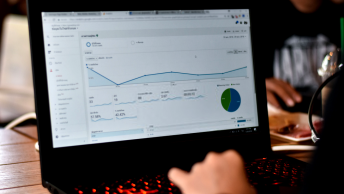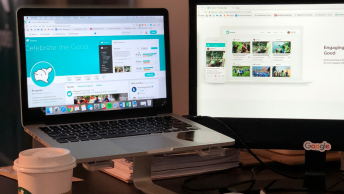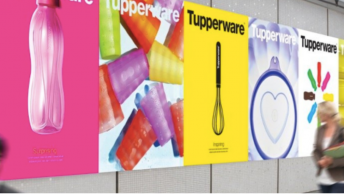Getting the right image for your article can feel like wading through a mile of red tape. Copyright laws can be confusing and a fear of lawsuits is overwhelming. Thankfully, there are some basic guidelines for legally using images in your digital brand.
When you first set out on your digital brand experience, you begin to realize how much is involved. Writing the perfect article can be time-consuming. You have to think about the message you want to convey and then make sure that it is coming out correctly. Then when you’ve finished you realize that you have to find an image for your post for maximum engagement.
This is where the real stress begins. You can search the internet and find the perfect image, but how do you know if you can use it? Respecting copyright laws can be complicated if you don’t understand how they work.
How to Legally Use Images in Your Digital Branding
Images play a significant role in your digital branding. Marketers have found that visual marketing is the most important form of content, second only to blogging.
Consumers relate most to visual information these days, with social media platforms Instagram and Snapchat being created on just the premise of sharing photos. Keeping up with these trends means that adding images to your digital branding is incredibly important.
When people hear information, they’re likely to remember only 10% of that information three days later. However, if a relevant image is paired with that same information, people retained 65% of the information three days later. – John Media
Adding images to your work is a no-brainer. Statistics prove that it will help boost your website, and we’re always looking for the best way to give our business the edge.
So how do we get images? What are the rules when using other people’s images?
Get An Understanding of Image Copyright Basics
Copyrights are fairly simple. You put it on the internet in a fixed form and it’s legally yours. This applies to literary works, performing arts, visual arts, digital content, motion pictures, and photographs.

Copyrights are an assumed process. Meaning, if you put the work out there then it is just assumed to be yours. The copyright symbol isn’t even legally required anymore. Putting your stuff on the internet contains the social pact that no one will try to take it away or claim it as their own.
That being said, plagiarism and copyright infringement are not the same.
Plagiarism can be avoided by giving the proper credit to where the information came from. It is primarily ethical, whereas copyright infringements are a legal concern.
With copyrights, giving a shoutout to the person who took the picture doesn’t make it okay to use the picture.
Copyrights give the copyright holder the legal ability to choose when their image is published.
No questions asked.
Check Out the Rules For Your Social Media Platforms
The different social media platforms have different rules about how images are used.
Twitter allows its users to retweet other people’s words. Pinterest allows users to pin other people’s pictures to their boards. Reading each platform’s Terms of Service can help you avoid any legal issues related to using someone’s work.
SEE ALSO: How to Take Awesome Pictures with Your Phone
Check Out Licenses When Using Stock Images
Typically, the more expensive the license, the more you’re allowed to do with the stock images you use. Be very aware though of what the parameters of the license you buy are. Make sure that the license completely covers all of the uses you’re planning on using the stock image for.
A lot of licenses only allow users to use their images strictly for personal or online use, and only for a certain number of uses. Likewise, purchasing a license may not allow you to use images in paid newsletters, or other types of work that may have a transfer of funds. Read over the documents attached to your image carefully so that you know exactly how you can use the image.
When in Doubt, Get Permission From the Image Creator

In the social media world, it’s very easy to get in touch with the people who post their images online. A quick private message can get permission (in writing) to use images that you admire online on your personal pages.
Just remember, it’s your website which makes you liable for the images that you use without permission. You can’t just blame it on the designer or anyone else working on your team, at the end of the day it’s your responsibility.
This is true even if you don’t realize that the image is copyrighted, the picture has been resized, you link the photo back to the source, you have a disclaimer on your site, or your pic is embedded instead of saved onto your computer.
If you don’t get permission to use an image, you will get caught and it will cost you. The common amount of damages asked for when dealing with an image copyright issue is around $8,000. Buying a license to use an image is starting to look a lot more affordable, right?
SEE ALSO: Digital Brand Damage Control: How to Fix Negative Content
Fair Use May Not Apply to Your Use of Someone Else’s Image

A lack of copyright notice does not mean free images and just because the social media site has a share option doesn’t mean that its legal. Confusing right?
Fair Use Laws are an exception to copyright laws. They state that images can be used without permission as long as it serves the public good.
SEE ALSO: How To Handle Stolen Content
The questions to ask to determine whether or not your use falls under Fair Use Law are:
- Is the copyrighted work fact-based or creative?
- Is it for educational, nonprofit, or commercial use?
- How much of the work is reproduced?
- How will it affect the future use of the original work?
Be aware that these are just the questions that courts will look at during a lawsuit. Any time you use an image and don’t follow copyright protocol, you are looking at the potential for a lawsuit.
Think carefully before using an image without permission because if the owner of the image finds out then you’re looking at an expensive image when all the court costs are added up.
The honest truth is that using images on your blog without permission will most likely not qualify for fair use. Its always better to get permission, even with personal use.
Places to Find Truly Free Images
Thankfully, there are several websites where you can find images where the creators have given up their rights so that others can use them. Although, even here it is important to be perceptive. Sometimes copyrighted work slips through, creating a legal mess.
Helpful Sites:
- Creative Commons: here content creators can share their images with others without making them obtain copyrights. However, only certain images can be used without attributing the creator, and they will still have their copyright mark on it (CC).
- This is usually a spot where creators get started putting their name out there, so they want people to use their images but still want credit.
- Gratisography: This website was created by photographers. They have a wide range of images for any project and their free price tag makes them the perfect fit for any budget.
- Unsplash: This site is part of Creative Commons, called Creative Commons Zero. These images don’t need any attribution, unlike the ones shown on Creative Commons.
- Google Advanced Image Search: This can be a great option as long as you are extremely careful. There is a usage option that you can click on and select ‘free to use or share, even commercially’.
- Even after finding an image its a good idea to check out the license requirements for the image on the actual page itself. Its always better to check and save yourself trouble later.
- Flickr: Just like Creative Commons and Google Advanced Search, this site is a great place to find images, but you have to make sure that you search for images with ‘commercial use allowed’ highlighted.
Even when using these sites to find pictures for your website, be careful. Do your reading and make sure that the images you choose are actually free or just need a disclaimer or recognition. Double checking will make sure that you use all the images you choose legally.
Final Thoughts
Adding images to your website is necessary for our visually driven world, however, it’s important to make sure that we do it legally. Obtaining images within their copyright specifications may be more time consuming, but it will always be cheaper than the alternative.
There are several sites willing to help you find free photos without strict copyrights, so when in doubt these are great to use. However, it is also easy to just send out a message to the creator and ask them what their plans were with their image. Odds are good that you’ll be able to work out a deal to use the perfect image that you found, just make sure to get that deal in writing.
Have you ever had image copyright problems? I would love to hear about it in the comment section…











